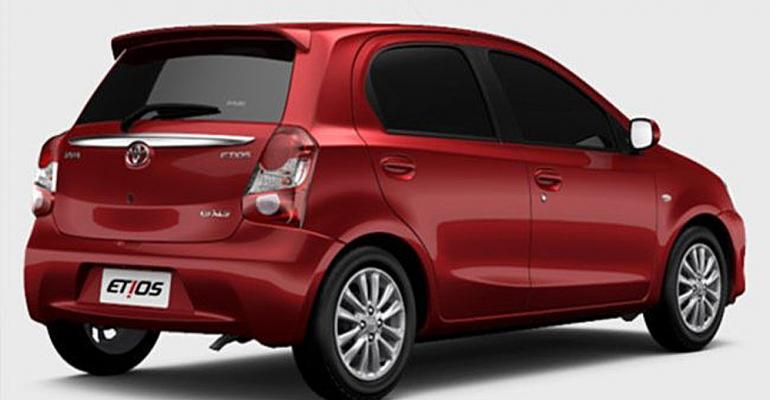SAO PAULO – Toyota is making efforts to shake off its inertia in Brazil, as part of its strategy to dominate world sales.
The auto maker, along with a number of analysts, also believes Brazil will surpass Japan’s economy by 2015.
Toyota, which has had a presence in Brazil since 1958, produces the Corolla and last year sold 63,729 units, WardsAuto data shows. It also builds the light Hilux pickup truck in Argentina.
Imported models available in Brazil include the RAV4 small cross/utility vehicle and Camry and Lexus ES sedans. Toyota delivered 55,038 total passenger cars in the country in 2011 giving it a 3% market share.
But the result pales in comparison with sales of the top four leading auto makers last year: Volkswagen with 615,572, Fiat at 610,000, General Motors with 567,410 and Ford at 259,548. However, Toyota says it plans to double sales in Brazil to about 200,000 vehicles in the next two years and is aiming to become a market leader in the next decade.
Shifting into drive now is an important move for Toyota in Brazil, with rising consumer demand and government incentives prompting foreign auto makers to boost investment in the country.
Mark Hogan, a former GM executive who serves as an advisor to Toyota, is quoted in a recent media report as saying, “Toyota was sleeping in Brazil, especially due to the effects of the 2008-2009 (economic) crisis, but has since woken up and is going to show important innovations.”
Toyota executives say they are considering a strategy to use Brazil as a production hub to export cars and parts to emerging and mature markets, including North America.
The auto maker’s first step is the inauguration this month of its third plant in Brazil located in the southeastern town of Sorocaba. The BR1.2 billion ($600 million) factory initially will produce 70,000 Etios compact cars annually. If sales are favorable, that number likely will expand to 100,000 units a year, but capacity can stretch to 400,000 if demand warrants.
The car, which also is sold in India and South Africa, has been refreshed for Brazil with different taillamps, interior changes and a modified hatchback model. The 5-door will be powered by a 1.3L gasoline engine and the sedan will get a 1.5L gasoline engine, both mated to a 5-speed manual transmission.
The two Etios models, which go on sale here in September, will serve as Toyota’s first entry into Brazil’s growing compact-car segment, currently dominated by the four top-selling auto makers, plus Renault-Nissan, Hyundai and several Chinese auto makers new to the market.
Etios prices range from BR35,400 to BR45,440 ($17,500 to $22,500), but that’s pricy compared with the basic compacts from the Big Four and other competitors.
The Etios will be looking to win away share from the leading VW Gol, Fiat Uno and Nissan March. It also will face off with the upcoming Chevrolet Onix, a subcompact sedan based on the Chevy Spark, as well as the Fiat Siena, Renault Logan and compact Peugeots. Time will tell whether the Brazilians are willing to pay extra for a compact.
Toyota’s Sorocaba plant presently employs 1,500 workers, growing to 2,000 when the second shift is implemented. There are 12 systems suppliers in the region that generate 3,000 more jobs.
The Brazilian unit is the first eco-factory in the country, cutting emissions 60%. In addition to the Sorocaba plant, Toyota builds the Corolla in nearby Indaiatuba and makes components in São Bernardo do Campo in metro São Paulo.
A fourth plant, to be constructed in Porto Feliz, São Paulo, located near the Sorocaba facility, will produce 200,000 engines for the Etios and Corolla, with plans to hire some 700 workers. The engines presently are imported from Japan.
The fourth factory is expected to come on-stream by 2015 and should increase the nationalization level of the two models to 85% from 65%.
Toyota’s first plant in Brazil, which also was its first outside of Japan, built the Bandeirantes pickup truck model in 1958. The Corolla factory was built in 1997, and the Hilux and SW4 models were added in 2005.
Toyota will begin importing its popular Prius hybrid-electric vehicle in October during the São Paulo auto show. The HEV will be adapted to Brazil’s standard E25 (25% ethanol/75% gasoline) fuel.





